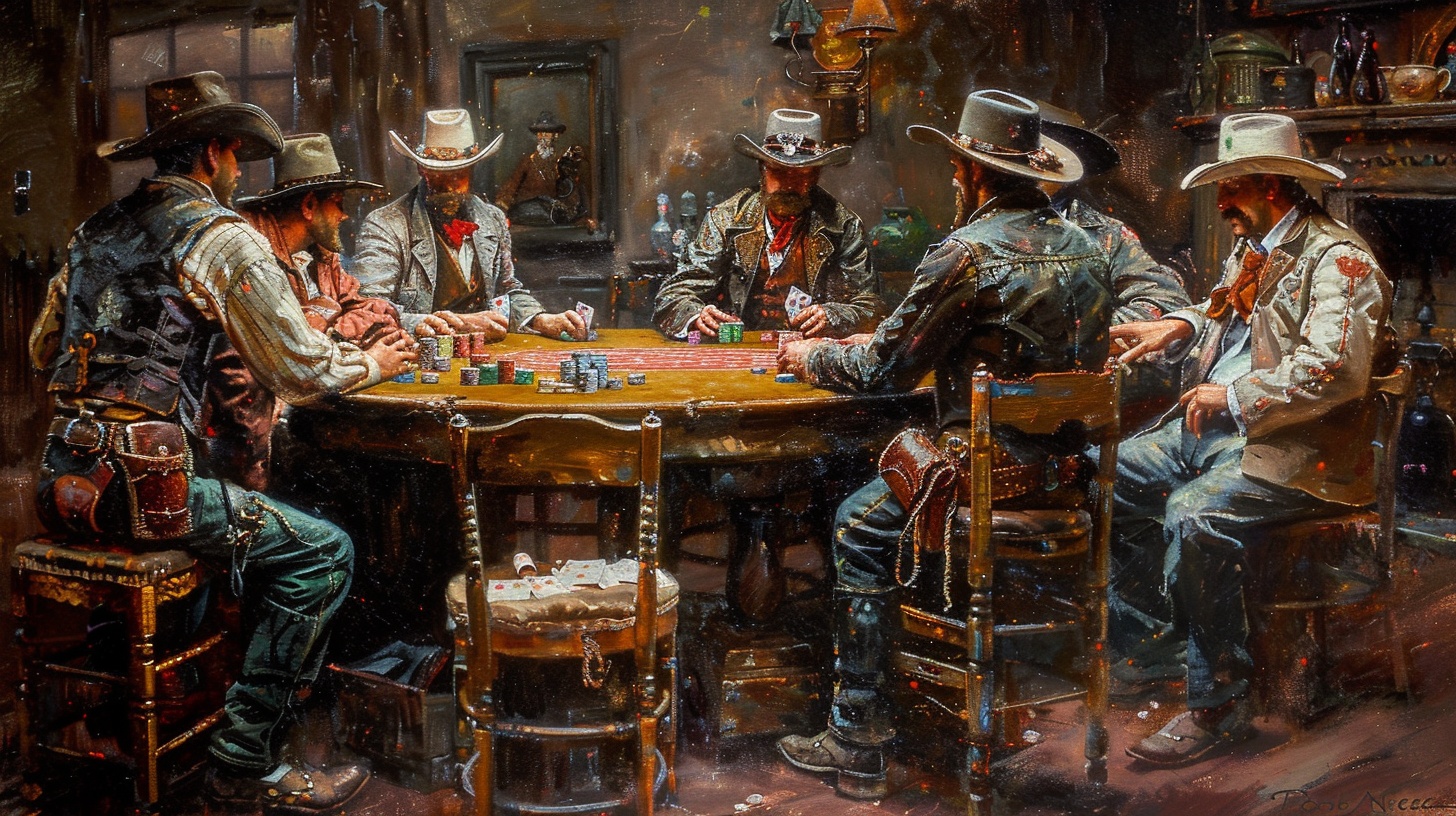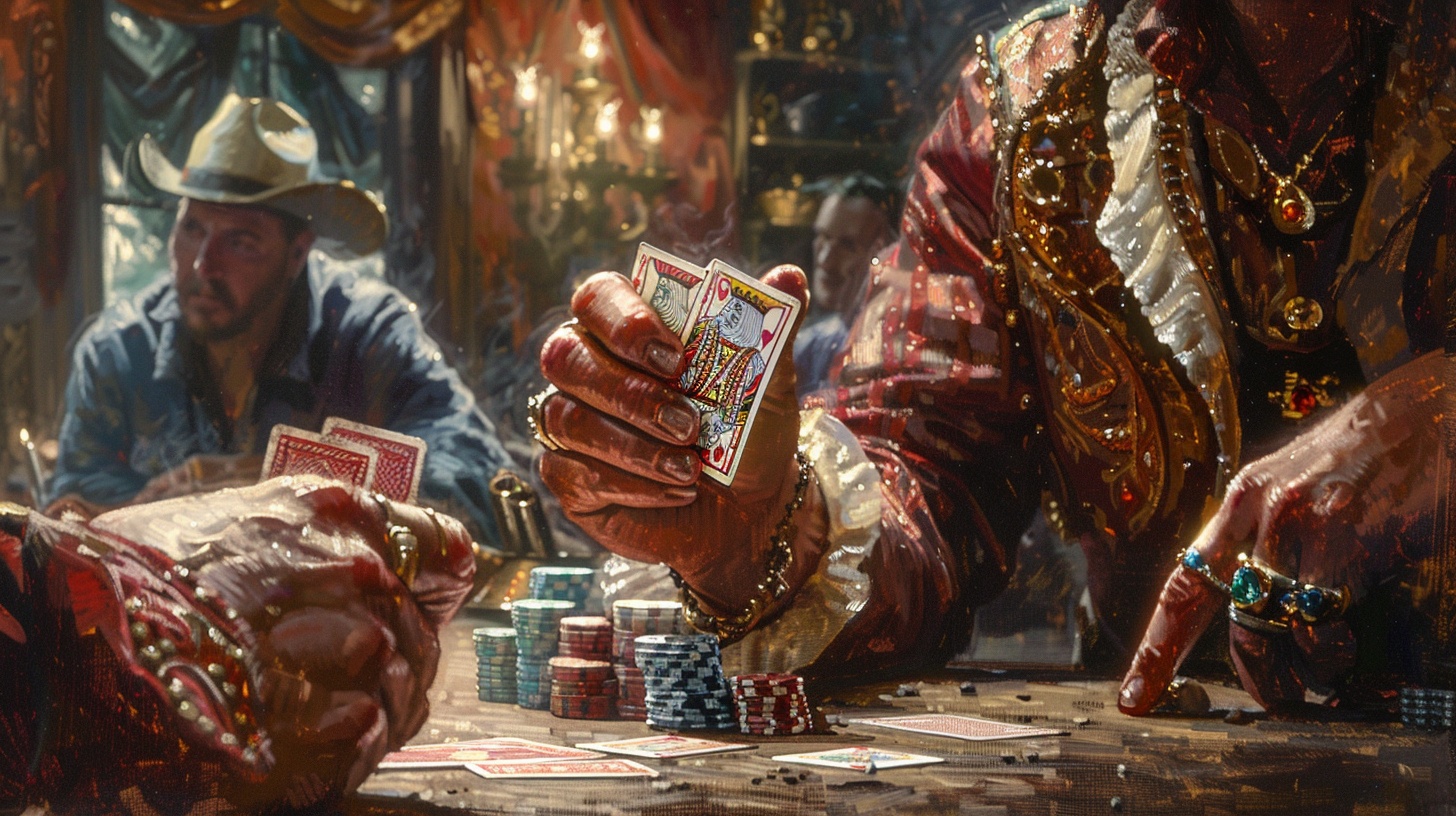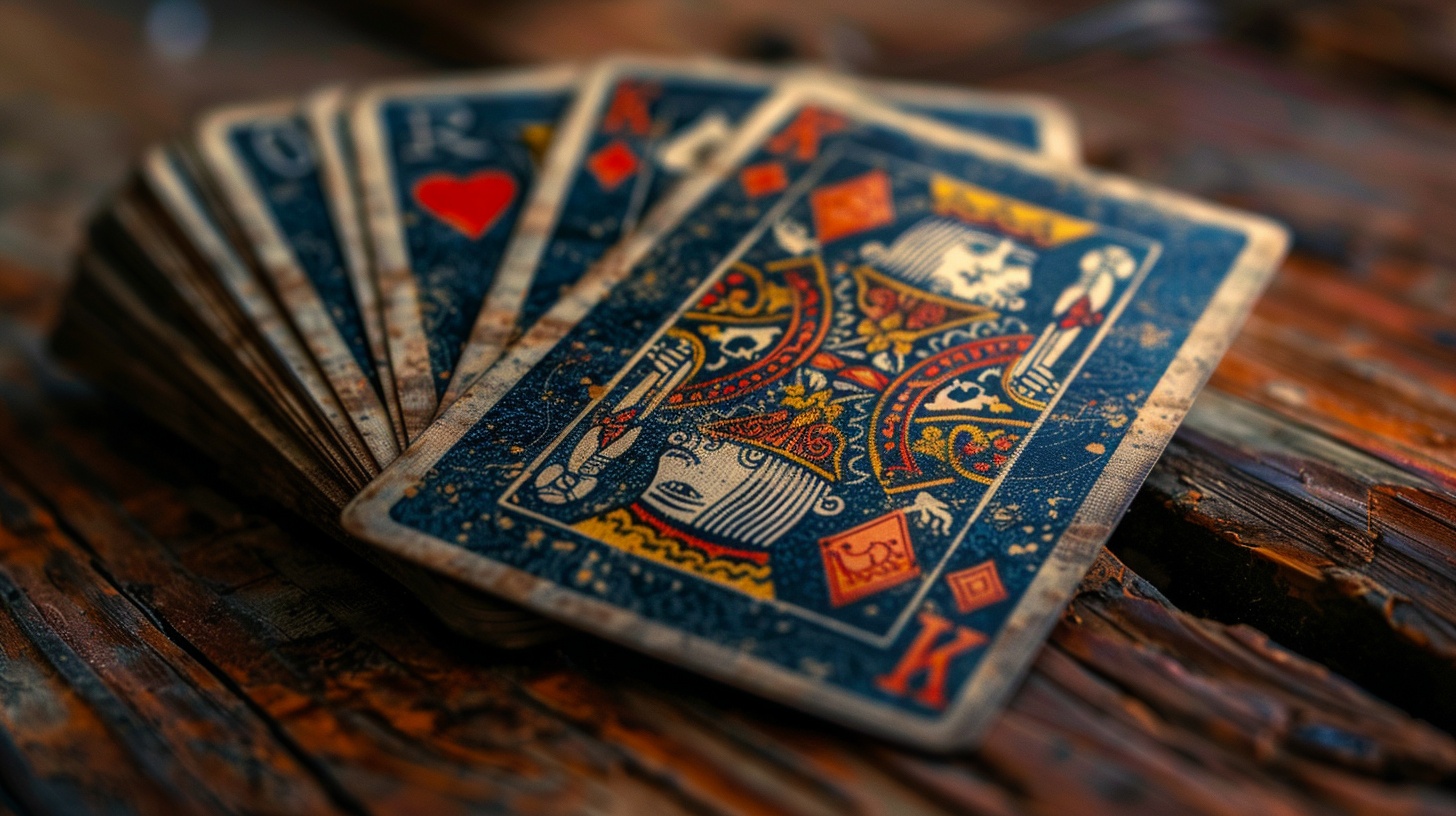
The American Gambling Frontier
As an author of novels in an alternate, retro-futuristic Wild West (check out my popular trilogy, The Adventures of Bodacious Creed), I love learning about that period of American history. One fascinating topic is the art of gambling in the Wild West.
The story of gambling in the United States is woven through our tumultuous Wild West history. In the late 19th century, the American frontier was a melting pot of adventurers, outlaws, and entrepreneurs, with gambling a common thread linking communities. Let’s travel back to the 19th century and explore gambling in American society, focusing on its explosive growth during the Wild West era, embodied by legendary figures like Wild Bill Hickok and the enigmatic card sharp S.W. Erdnase.
The Card Games of the Wild West: Faro and Poker

In the bustling saloons and gambling dens of the Wild West, two card games reigned supreme: faro and poker. Faro, often referred to as the “King of Games,” (and pronounced pharaoh, like the kings of Egypt) was the most popular gambling game of the era. Originating in France, faro made its way to America in the 18th century, gaining immense popularity in the West because of its fast-paced nature and easy-to-understand rules. The game involved betting on cards drawn from a specialized deck, with players wagering on the order in which the cards would appear. Its appeal lay in its simplicity and the quick resolution of bets, making it a favorite among casual gamblers and seasoned professionals alike. However, faro’s popularity also made it a prime target for cheaters, with rigged dealing boxes and marked cards frequently reported, leading to its eventual decline as trust in the game waned.
Poker, on the other hand, emerged as the enduring symbol of Wild West gambling, encapsulating the region’s blend of skill, bluff, and chance. Unlike faro, poker allowed for more player control and strategy, with variations like draw and stud poker becoming staples in gambling halls. Poker games were intense social encounters; reading opponents and strategic betting were as crucial as the cards dealt. The game’s inherent complexity made it a staple of Wild West culture, immortalized in countless tales of high-stakes games in dusty frontier towns. Poker’s ability to combine luck with skill and psychological warfare ensured its lasting place in gambling history, far outliving faro to become a cornerstone of modern casino gaming.
These card games, with their rich history and deep association with the Wild West, provide a glimpse into the era’s social dynamics and cultural preferences. Faro’s fast decline and poker’s enduring popularity reflect the shifting trends and tastes in gambling practices, mirroring the broader evolution of American society from the rugged frontiers of the Wild West to the structured complexity of contemporary life.
The Heyday of Wild West Gambling
Gambling in the Wild West was more than a leisure activity; it was a vital part of social life, reflecting the era’s ethos of risk and reward. Saloons, tents, and makeshift casinos buzzed with activity, offering games like poker, faro, and monte. These establishments provided a communal space where men, and some women, won and lost fortunes in the blink of an eye.
Wild Bill Hickok: The Gambler and the Gunfighter
Wild Bill Hickok, a quintessential figure of the Wild West, exemplified the era’s gambling spirit. Known for his sharpshooting and law enforcement career, Hickok was also a notorious gambler. His death in 1876 while playing poker in Deadwood, South Dakota, has cemented his place in gambling lore. Shot by Jack McCall, purportedly over gambling grievances, Hickok’s last hand of aces and eights became the infamous “Dead Man’s Hand,” symbolizing the perilous nature of Wild West gambling. This incident underscores the volatile mix of gambling, honor, and violence characteristic of the time.
S.W. Erdnase: Master of the Card Table
In the shadowy corners of gambling history lurks S.W. Erdnase, author of “The Expert at the Card Table.” Published in 1902, this book remains a seminal guide to card manipulation and cheating. Erdnase, whose real identity is still debated, captured the essence of the card sharp’s art, detailing techniques that influenced both gamblers and magicians. His work offers a glimpse into the underground world of professional gambling, where mastery of sleight-of-hand was as revered as the ability to read an opponent’s tells. The best magicians use his slight-of-hand techniques to this day.
The Culture and Consequences of CheatiNG

In the Wild West, gambling was not just a game of chance but also a game of skill, wit, and deception. Cheating was rampant, and accusations thereof often led to deadly outcomes. Gamblers’ reputations hinged not only on their success at the tables but also on their perceived integrity. A cheater, once exposed, faced ostracism or worse, as personal honor and respect were paramount in the gambling community.
Gambling Halls and Social Dynamics
The gambling halls of the Wild West were social and economic centers that provided a nexus for exchange beyond mere currency. They facilitated the flow of information, goods, and more. These locals reinforced, and challenged, social hierarchies, and the diversity of the American frontier was on full display.
Economic Impact and the Gold Rush Connection

The link between gambling and the economy was obvious in gold rush towns, where prospectors gambled with the same fervor with which they mined. Towns like Deadwood and San Francisco experienced economic booms fueled by both mining and gambling industries. Gambling revenues helped build infrastructure and funded public services, contributing to the growth and development of the West.
Legal and Social Ramifications
As towns grew and societies became more structured, the need for regulation became apparent. The initially unbridled gambling practices faced legal scrutiny. Efforts to curb gambling’s excesses reflected broader social and economic shifts, marking the transition from frontier lawlessness to regulated civic order.
The Legacy of Gambling in American Culture
The Wild West period laid the groundwork for the gambling industry in the United States, blending the thrill of chance with the American ethos of opportunity and risk. The legacy of figures like Wild Bill Hickok and S.W. Erdnase continues to permeate the world of gambling, symbolizing the blend of skill, luck, and daring that characterizes the American gambling spirit.
From Frontier to Modernity
The evolution of gambling in American society from the Wild West era to the present encapsulates a journey from lawless frontier activity to a regulated mainstream pastime. The tales of Wild Bill Hickok and S.W. Erdnase highlight the allure and danger of gambling in the Wild West, reflecting broader themes of American history such as innovation, risk-taking, and the quest for justice. As the gambling industry continues to change, it carries forward the legacy of the Wild West, marrying the thrill of the gamble with the steadiness of regulated enterprise.
“The highest form of wisdom is to know when to play and when to stay away.” ~ Earl Wilson